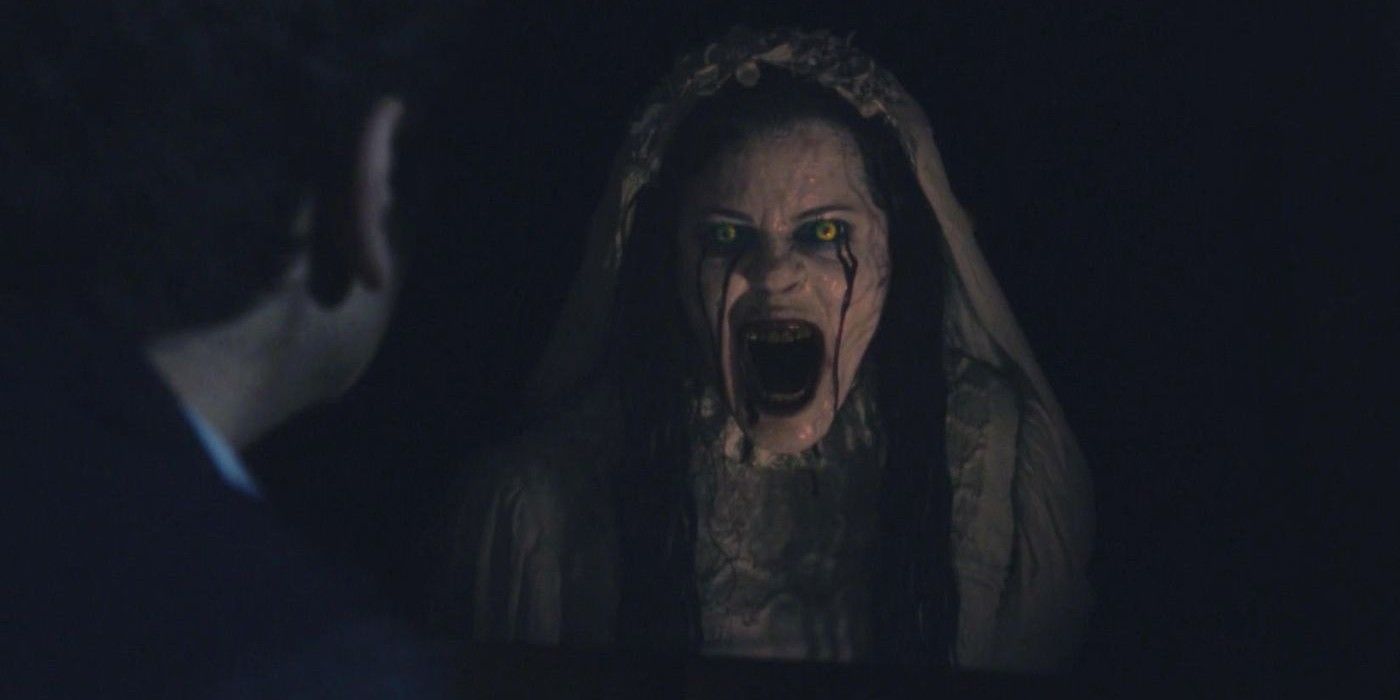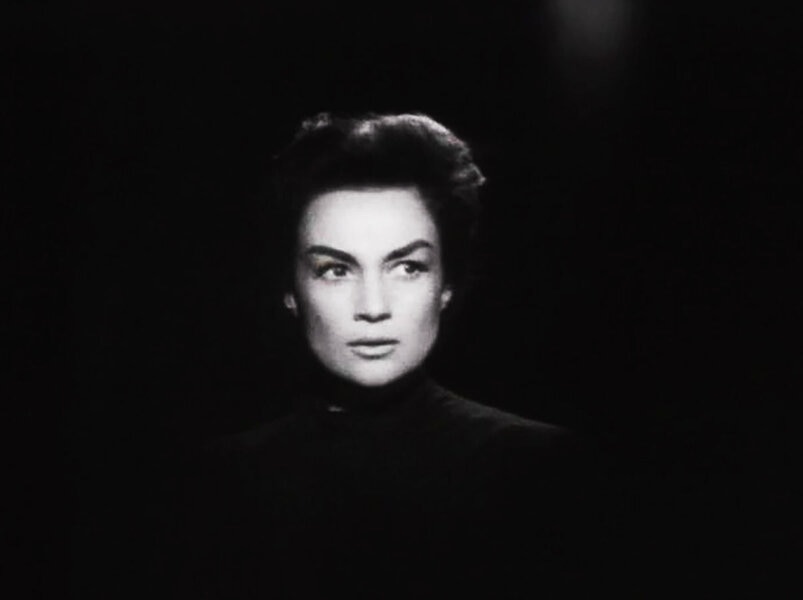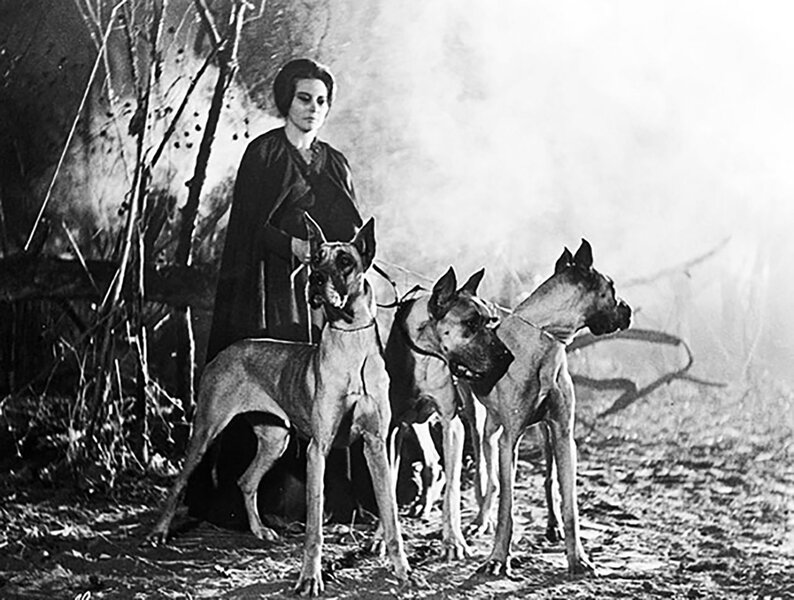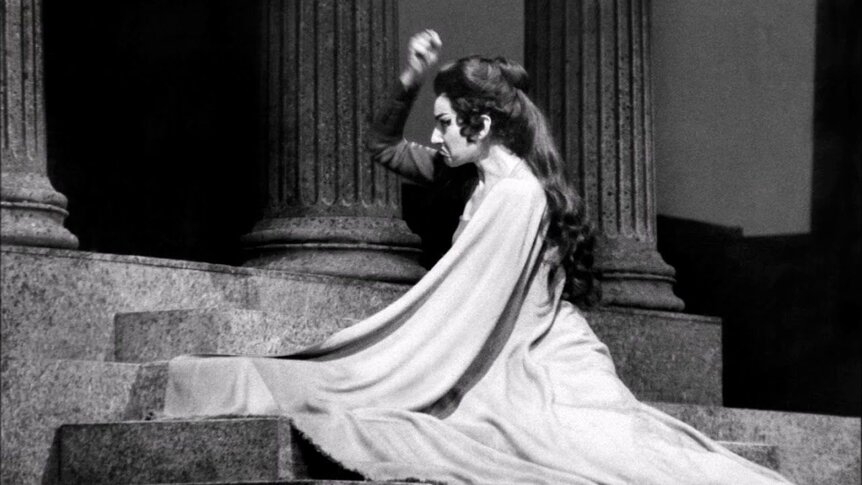Create a free profile to get unlimited access to exclusive videos, sweepstakes, and more!
La Llorona and myths of filicide

Trigger warning: Filicide is extremely upsetting, both in real life and in fiction, so please proceed with caution.
Fans of ghost stories are no stranger to the legend of La Llorona. Perhaps stretching so far back as to claim Aztec origins, the infamous “weeping woman” has become a classic horror story for kids and adults alike. Not just another haunting cautionary tale to scare children into staying clear of strangers, the specific horror and tragedy of La Llorona continues to fascinate audiences worldwide. A mother who murders children is considered across modern society to be the most terrible of monsters. She has been the subject of many films and songs, but, more than anything, she lurks our collective nightmares.
With the new La Llorona film due in theaters this week, it’s time to take a look at not just this legend, but the many other legends of the filicidal mother as she appears in mythology. What purpose does she serve, and why has she stuck around for so long? In part, the sheer brutality of the story, in part the tragedy, but perhaps more than anything, because La Llorona reflects a waking world nightmare–the scorned woman, her terrible revenge, and the death of innocence, both metaphorical and tangible.
La LloronaThe legend of La Llorona has changed and shifted to suit the purposes of the person telling it, so it’s impossible to say what the “real” version of the story, or even where exactly the myth saw its beginnings. We do know that in Mexican culture, ghost stories have special prominence. It is no surprise that this spirit claims Mexico as its place of origin, as that is one part of the world that has foreboding tales of the undead on lock. From “the Vanishing Hitchhiker” to La Planchada and beyond, ghosts impact Mexican legend and folklore in a profound way. One holiday, the widely-celebrated Day of the Dead, is to honor those that have passed. Sporting death masks, it is the observance of death as an inverse of life.
Despite the murkiness of her origin story, she is now in retrospect considered to be the sixth of the eight omens that apparently foresaw the colonization of Mexico, according to legend. In what is believed to be her earlier form as the skull-faced goddess Cihuacoatl, she is said to have been seen weeping at the crossroads where she abandoned her own child, warning the ruler Montezuma to flee the city. Of course, this is all second-hand information centuries removed, and it’s impossible to say what grounding the eight omens have in reality, but that La Llorona represents a central figure in one of the great catastrophes of Mexican history speaks volumes about the impact and the legacy of the parable.
In other stories, La Llorona was a beautiful but hopelessly impoverished village girl named Maria who caught the eye of a nobleman. Boldly refuting warnings and judgment from the townspeople as well as his own family, he married Maria, and they had two sons. Yet, ultimately their differences in upbringing became a barrier between them. She was poor and he was rich, and once the thrill of throwing off his societal status for true love wore thin, he began to mend his relationship with his family, whose good graces he could only truly regain by abandoning Maria. Not only that, but he was introduced to a fair-skinned rich woman with whom he fell in love, which led him to quickly forget all about Maria.
Though not present in all retellings, that Maria was poor and dark-skinned while her rival was rich and white has appeared in some versions of the story. The implication is because of her social status, she and her sons will die of illness or starvation without her husband, and he does not care. Maria drowned her sons in grief, and soon after she went missing, her own body washed up on the shore of the river. When she made it to Heaven, she was told not to return until she found her children, who she continues to search for. If caught by La Llorona, it is said that kids will become victims of drowning at her hands.
The Unforgivable CrimeThere is no crime more upsetting than that of a mother killing her own fully formed child in cold blood, because not only does it confound and terrify us on an almost indescribable level, it presents a great deal of unspoken commentary on the ignored cries for help of some desperate mothers as well as the silent pain of abused children. It shows us that some of us are in supreme danger even as innocent babies in our mother's arms, that even the concept of safety is as much a myth as La Llorona herself. We want to live in a world where such things do not happen.
Yet, these things do happen. In fact, homicide is one of the leading causes of the death of children in today’s world, and an estimated 2.5% of all murders are filicidal. Real-life women guilty of filicide have claimed La Llorona as a story parallel to their own. In 1986, a woman named Juana Léija attempted to kill her eight children, succeeding with the deaths of two. When questioned, she insisted that she herself was an embodiment of La Llorona. Leija was an abused woman who believed she was saving her children from suffering, a more common real-life reason than vengeance. In reality, “revenge” killings by women of their own children are exceptionally rare and it is indeed the least common motivation, according to the experts. One of the most prevalent, however, is “altruistic” killings, in which the mother is convinced that she is somehow saving her children from the agony of life. While La Llorona would be generally classified as a revenge killer, there is an element of the “altruistic” about her as she ends her own life as well, unable to continue existing in the world without her once cherished family, now broken beyond repair.
Though La Llorona is emblematic of what we culturally consider to be the most monstrous possibility for a mother, her wickedness does not exist in a vacuum. She gave up everything for the man that leaves her behind. Class status and potential racism are at the heart of her myth, as she is abandoned for a woman of higher social standing, her love rendered meaningless and her children forsaken by their own father. When she commits her terrible crime, it is because she has no options, but moreover, it is the all-consuming rage of having her options taken from her by someone who is completely complacent to all notions of her suffering, who knew better and who hurt her anyway.
Similar Stories
From the Lorelei to the Banshee, there are many legends that feature a dangerous "weeping woman." These stories are not just a hint to stay clear of said women, but also offer commentary on the men whose actions drive the monstrous actions of the women in question. Elements of the La Llorona myth have been traced all the way back to Germanic folktales of the fifteenth century, but it is this writer’s suspicion that no matter how far back in time we went, there would always be a story very much like hers, bridging disparate cultures, condemning the callousness of men towards women while warning children and adults alike to beware strange, wandering women.
In Norse mythology, the figure Gudrun has been presented in a number of different ways, but for our purposes, the most important is in the Prose Edda, in which she is the wife of Atilla the Hun. Though she had two children with the conqueror, when he kills her brothers and steals their gold, she, in turn, kills their kids and cooks them as part of a feast for her husband. After he finishes this meal, she gloats on what she has done, and murders him as well, setting the whole place aflame.
Greek mythology is no stranger to graphic, seemingly senseless horror, and indeed La Llorona herself would fit in soundly among the many countless Greek tragedies. For another example, there is the terrifying Lamia, a beautiful mistress of Zeus who bore him many children. When his wife Hera discovered his infidelity, she spitefully transformed Lamia into a twisted, child-eating monster, forcing her to devour her own offspring. This horror led her to pursue the children of others, becoming an early example of a bogey.
Likewise, the play Medea followed a woman who slew her own young. Although the supernatural element was almost entirely removed, the classism is very much intact. Medea's background is considered to be barbaric and even subhuman through the eyes of the Greeks. Though the specifics at play are unclear, she refers to herself often as a foreigner throughout the play. Jason also refers to her as being somehow socially inferior to himself, and when he leaves her, it is for a fellow Greek. Medea aided her husband against her own family, comparatively impoverished, burning bridges with her home forever as she left to be with her love. When he leaves her for another woman, he isn’t leaving her in a way that she can recover from. She is essentially doomed, although when she kills her own children it is not for survival but because she knows it is the thing that will harm Jason the most. The play shows a great deal of sympathy even for the rage-filled, monstrous side of Medea, and the love she holds for her children and her overwhelming grief are given priority in the telling. As with La Llorona, Medea is horrifying, yet disturbingly sympathetic.
La Llorona is also considered to be closely tied to or even in some ways based on La Malinche, a woman who was given to the conquistador Cortes as a slave and who aided him as a translator and guide in his conquest of Mexico. Obviously, this is a controversial figure, much like La Llorona. At times, she is seen as a woman who was quite literally bought and sold by her own people, and as such owed them little to nothing. If looking at it through this lens, the morality one can take of this is that a society that abuses women is no more morally pure than the next, and by positioning women as secondary citizens a society writes its own downfall. This take portrays an incredibly complex understanding of the many facets of abuse of power and paints all parties as being somewhat complicit. On the other hand, many versions of her story view her as simply a treacherous and manipulative monster who was happy to sell out the Aztecs for her lover. As with so many tales, it depends on who you ask.Meanwhile, La Llorona herself has made it to the realm of cinema more than once, and other takes on the story, such as La Llorona (1933), La Llorona (1960) and The Curse of the Crying Woman (1961). She is also the subject of a very weird song and appeared as the monster of the week in the TV series’ Grimm and Supernatural. She is now being introduced to the Conjuring Universe with The Curse of La Llorona (2019). Only loosely connected to the other films, it is difficult to say what impact the film will have on the cinematic suite, but if it manages to bring new life to an old legend while potentially revitalizing a franchise, it’s safe to say it’ll have done its job.
As for La Llorona herself, we ask only that she keep her wanderings to the realms of fiction. The world is scary enough as it is.





























